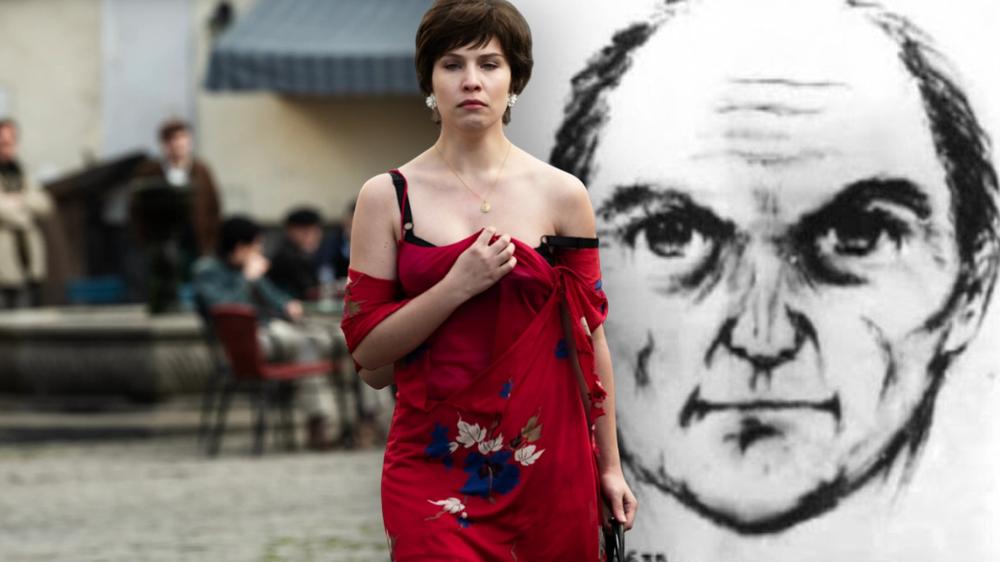Netflix has released The Monster of Florence, a four-part true crime dramatization on one of Europe’s most enduring murder cases. To this day, questions remain about the killer, with viewers now asking: were they ever caught? Warning: some may find this content distressing.
The Monster of Florence is the latest in a spate of true crime dramatizations, following on from Monster: The Ed Gein Story and Murdaugh: Death in the Family. This series focuses on the serial killer (or possibly killers) who terrorized the countryside around Florence, Italy, between 1968 and 1985.
A total of eight couples (16 victims) were murdered during this time by a .22 calibre Beretta pistol, with the perpetrator hunting couples parked in secluded areas and often mutilating the female victims.
The Netflix show follows an investigation into the case, unraveling a dark family history, with each episode told from the perspective of a different suspect while detailing the institutional failure, media frenzy, and public paranoia that arose.
Was the Monster of Florence ever caught?
Despite multiple investigations and several suspects being arrested and convicted, no one has been definitively proven to be responsible for all the crimes. The murder weapon was never fully traced, and many believe the Monster of Florence case to be fully unsolved.
There were many theories about the identity of the killer – dubbed “Il Mostro” (translated as “the monster”) by Italian press – as well as their motives. Although multiple suspects were charged over the years with murders associated with the Monster of Florence, the case was reopened in the 2000s.
The Italian public still considers the case to be unsolved, and the victims’ families have petitioned for evidence to be reexamined in recent years. There have been many suspects, with the true crime series choosing to place particular focus on the Sardinian Trail.
What is the Sardinian Trail?
One of the early and most controversial lines of inquiry in the The Monster of Florence case was what investigators called the “Pista Sarda” (Sardinian Trail) – a theory that the killer (or killers) originated from Sardinia and were linked through lovers and family ties to the first known murder victims.
Following the 1982 murders of Paolo Mainardi and Antonella Migliorini, police re-examined the 1968 murders of Antonio Lo Bianco and Barbara Locci, who are believed to be the first victims of the Monster of Florence.
Locci’s husband Stefano Mele had originally been convicted of her and Bianco’s murders. But police discovered that Mainardi and Migliorini had been shot with the same weapon as the 1982 killings, and so they realized that either he didn’t act alone or he wasn’t guilty.
Francesco Vinci, a former lover of Locci’s, was arrested first and was kept in custody for over a year. Then, prosecutors widened the net and arrested Mele’s brother and brother-in-law, Giovanni Mele and Piero Mucciarini. However, when further murders unfolded in 1984, all three were released. Mele was also released after having spent six years in prison.
The trail is now widely considered a major red-herring in the investigation, cited as a costly diversion that delayed focus on other leads.
Who were the other suspects?
There were many suspects who arose over the 17-year serial killing spree – here’s a breakdown of the main players (excluding those tied to the Sardinian Trail):
- Enzo Spalletti – A young voyeur and paramedic who was jailed for three months in 1983 after being charged with murder, before being cleared
- Francesco Vinci – Arrested in the mid-1980s for allegedly hiding evidence, Vinci was never convicted for the main killings
- Pietro Pacciani – A farmer from Scandicci who was convicted in 1994 for some murders and then acquitted on appeal in 1996; he died of a heart attack in 1998 before a retrial
- Mario Vanni, Giancarlo Lotti & Giovanni Faggi – Alleged accomplices in the Pacciani investigation. All three were tried in the late 1990s: Vanni and Lotti were convicted and sentenced to prison in 1998, while Faggi was acquitted due to lack of evidence. Lotti died in 2002, and Vanni in 2009
- “Snack Buddies” – The nickname given to Pacciani and his circle, referencing their habit of meeting for snacks and drinks. Their circle was later involved in a controversial satanic cult theory, with Lotti alleging that Pacciani had been hired to collect body parts of victims to use in rituals, although this theory has been discredited
- Francesco Calamandrei – A pharmacist who was tried in 2008 after allegations he was tied to the satanic cult theory, but he was ultimately acquitted
As you may be able to tell at this point, the investigation into the Monster of Florence was plagued by missteps, leaks, false leads, institutional rivalries, shifting theories, and societal issues, all of which helped the case grow more confusing rather than closer to resolution.
For Silvia Della Monica – played by Liliana Bottone in the Netflix series and the first prosecutor to investigate the serial killer – the answer is more simple than revenge plots or satanic cults: the Monster of Florence was a depraved person who hated women.
In a conversation with Adnkronos, Della Monica has praised The Monster of Florence and its creator, Stefano Sollima, while stating that the case “was not just a series of serial murders, but a true act of profound and pathological hatred towards women.”
As a deputy prosecutor at the Florence Public Prosecutor’s Office, she was among the first officials to understand that the 1980s murders had ties to the 1968 crimes. Although many of the body parts of the women were found, Della Monica received a letter in 1985 containing the breast flap of victim Nadine Mauriot.
Elaborating on the crimes, Della Monica said, “A repeated femicide, even if back then, more than 40 years ago, we didn’t call it that. The target was the woman, whose body was, if possible, mutilated and disfigured, while the man was eliminated above all because he was an obstacle.”
On the topic of the show, she stated, “Sollima was very careful, he reconstructed that period well, with precision. I only answered a few technical questions, nothing more. But I appreciated that he never tried to sensationalize the horror and suffering, out of great respect for the victims.
“His work began with an investigative moment that had been somewhat set aside over time, but which had laid bare the origins of the story: the connection with the double homicide of 1968, the same .22 Beretta pistol used in the different crimes, even if never found, the Sardinian lead, and above all the misogynistic violence that permeated everything.”
Della Monica described the “squalid and patriarchal” environment that the show captures, stating that at the time, “women had no value, reduced to objects. A culture of ferocious, deep-rooted, and silent male domination.”
She continued, “I was the first female magistrate in the Florence Prosecutor’s Office, and probably in the entire Court of Appeal district. I specifically followed the Baccaiano case, the crime that occurred on June 19, 1982.
“On that occasion I asked the family to authorize a media reconstruction, and I agreed with the press to report that the boy had survived and had had time to provide information to investigators.
“I was hoping for a reaction from the perpetrator. Indeed, a suspicious phone call did arrive, but it was not possible to record and process it due to the difficulties of wiretapping at the time.”
The Sardinian lead was important, said Della Monica, “For having linked the subsequent murders to the one in 1968, and especially to the .22 caliber pistol, the same weapon also used in subsequent murders.
“But the weapon, unfortunately, was never found. In investigating this case, there was a twofold concern: to apprehend the perpetrator of these terrible crimes, providing an answer to the victims’ families and a terrified Tuscany, but also to act with ever greater care and caution, because every arrest of a possible suspect in the 1980s was inevitably followed by another double homicide.”
However, she “disagreed with the arrest of Mele and Mucciarini. Above all, in an unchanged evidentiary situation, the gun was missing. And I feared another double homicide might occur.
“At the time, I also had other international organized crime investigations to follow, and it seemed more appropriate to step aside, quietly, without creating tension among the investigators.”
When Mauriot’s body part was sent to the district office, “I was forced to return, even though I didn’t want to. However, it was a macabre message that didn’t surprise me and which I had hypothesized as a possible challenge to the investigators, particularly Piero Vigna, whom I had involved in the investigation due to his undisputed investigative skills.
“Vigna also interpreted this message, accompanied by a piece of the victim’s breast, as a further insult to women and, in particular, a challenge to a female magistrate.”
Della Monica concluded, “I never wanted to influence those who came after me. All my colleagues who dealt with the Monster murders did so with great commitment and seriousness.
“No one can imagine what it was like to work with the resources of the time and under such emotional pressure, laden with expectations. We haven’t found the truth, and it’s a pain that remains.”
Could the killer still get identified?
It’s possible, and investigators haven’t ruled it out as new evidence emerges. In early 2024, a fresh DNA analysis reignited interest when Dr. Lorenzo Iovino, an Italian oncologist and hematologist based in the US, re-examined traces of genetic material linked to the case.
As reported by CBS, the DNA samples were from a .22 caliber Winchester bullet found in 2015 in a cushion belonging to Mauriot and Jean-Michel Kraveichvili, a couple who were shot dead in 1985.
The same DNA sample was taken from similar bullets found after the 1983 murders of Horst Wilhelm Meyer and Jens-Uwe Rusch, as well as the the murders of Pia Rontini and Claudio Stefanacci in 1984. Lawyer Daniele Piccione, who has been involved in the case, told the outlet that these findings could prove “very important.”
Meanwhile, the body of Francesco Vinci, an early suspect tied to the Sardinian Trail, was exhumed this year after his family questioned whether the remains buried in 1993 were truly his. The comparison confirmed his identity, but now it could possibly allow investigators to test his DNA against crime scene material.
Ultimately, advances in forensic technology mean the Monster of Florence case remains open and active, offering at least a slim possibility that the killer – or killers – might still be definitively identified.

 Spotify increases price again for some users and more rises are coming
Spotify increases price again for some users and more rises are coming